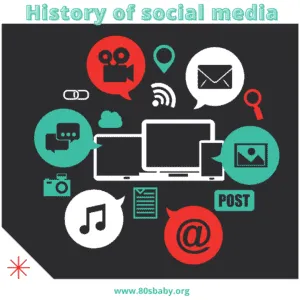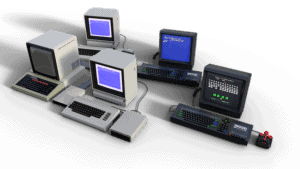The Best Fluffy Pancakes recipe you will fall in love with. Full of tips and tricks to help you make the best pancakes.
Computer history is a fascinating journey that spans centuries and continents, embodying the collective efforts of brilliant minds throughout generations. By delving into the depths of computer history, we gain a greater appreciation for the digital tools we often take for granted today. This article aims to guide you through key milestones that have marked the evolution of computing from its inception to the current era of cloud and AI.
The Birth of Computing
Long before electronic computers came into existence, there were mechanical devices designed to aid in complex calculations. The foundation of modern computing can be traced back to the 19th century by a visionary English mathematician named Charles Babbage. Known as the “father of the computer,” Babbage conceived the idea of the Analytical Engine, a general-purpose machine that could perform any calculation set before it. While it was never fully built in his lifetime, Babbage’s design laid the groundwork for future computing machines.
Simultaneously, the world’s first programmer, Ada Lovelace, recognized that Babbage’s engine could be used for more than just number crunching. She theorized that anything that could be noted symbolically, such as music or art, could be manipulated by the machine—a concept fundamental to today’s computing.
Journey Through Time: An Illustrated Timeline of Computer History
1940s
ENIAC, the first electronic general-purpose computer, was developed.
1950s
The first commercially available computer, UNIVAC I, was developed.
1970s
The invention of microprocessor leads to the development of personal computers.
1980s
IBM PC, Apple Macintosh, and Microsoft Windows operating system launch, marking the start of modern personal computing.
1990s
The rise of the Internet and the World Wide Web changes the way computers are used.
2000s
The proliferation of laptops and the emergence of smartphones and tablets make computing increasingly mobile.
2010s
Cloud computing becomes mainstream, and AI-powered applications like voice assistants become commonplace.
2020s
Increased focus on AI and machine learning technologies, along with the rise of quantum computing.
The Era of Mainframe Computers
The dawn of the electronic age saw the creation of the first digital computers:
The ENIAC and UNIVAC. Developed during World War II, the ENIAC (Electronic Numerical Integrator and Computer) was a colossal machine that used vacuum tubes to perform calculations at unprecedented speeds. It played a vital role in calculating artillery trajectories. Soon after, the UNIVAC (Universal Automatic Computer) emerged as the first commercial computer designed for a variety of applications, marking a significant transition from specialized machines to more versatile computing systems. The shift from vacuum tubes to more reliable and energy-efficient transistors was another landmark development in this era.
The Advent of Minicomputers
The late 1960s and early 1970s saw the rise of minicomputers, smaller and cheaper machines that brought computing capabilities to a wider audience. Digital Equipment Corporation (DEC) led the charge with its PDP series. These machines found extensive use in research institutions and businesses, democratizing access to computing and ushering in a new era of digital innovation.
The Personal Computer Revolution
The invention of the microprocessor in the early 1970s set the stage for the personal computer revolution. Compact and affordable, these devices brought computing power into the hands of everyday consumers. The Apple II and IBM PC became household names, transforming how we work, play, and communicate. This era also saw the birth of user-friendly operating systems and software, making computers accessible to non-technical users. Computers were no longer just tools for scientists or large corporations; they became personal productivity aids, educational tools, and entertainment platforms.
The Rise of the Internet
No discussion of computer history would be complete without mentioning the rise of the internet. This global network of networks, which grew out of the US government’s ARPANET project in the 1960s, has revolutionized how we access and share information. The advent of the World Wide Web in the early 1990s further democratized access to information, providing a user-friendly interface to the Internet. Today, the internet is integral to our daily lives, connecting us to a wealth of knowledge and a global community.
The Dawn of Portable and Cloud-Based Technology
The advent of the 21st century brought a revolutionary transition from fixed desktop computers to portable gadgets such as laptops, smartphones, and tablets. This shift in favor of portability has granted us the ability to access data and execute tasks while on the move, signifying a notable transformation in our engagement with technology. The emergence of cloud computing has further redefined our interaction with computers. Rather than storing data and operating applications directly on our devices, we frequently retrieve them over the internet from centralized servers. This shift provides us with unparalleled adaptability and the ability to scale, fundamentally changing our technology use.
Conclusion
The history of computers is a testament to human ingenuity and perseverance. Over the centuries, we have progressed from mechanical calculating machines to incredibly powerful electronic devices that fit in the palm of our hands. As we continue to innovate and push the boundaries of technology, who knows what the future holds for computing?
FAQs
1. Who is considered the father of the computer?
Charles Babbage is often regarded as the father of the computer due to his significant contributions to the field of computing. He conceptualized the Analytical Engine, a mechanical device that laid the foundation for modern computers.
2. What was the first personal computer?
The first personal computer that was accessible to the mass market was the Altair 8800, released in 1975. However, the Apple II and IBM PC, introduced later, were more user-friendly and significantly influenced the personal computing industry.
3. How has the internet influenced computer development?
The advent of the internet has had a profound impact on computer development. It has driven the need for more powerful processors, larger memory capacities, and faster networking technologies. Furthermore, the rise of the internet has sparked significant advancements in software development, including web browsers and cloud-based applications.
4. What is cloud computing?
Cloud computing is a model for delivering computing services over the internet. It allows users to access and store data and applications on remote servers instead of their local devices, providing flexibility, scalability, and potential cost savings.
5. What might the future of computing look like?
While it’s challenging to predict the exact future of computing, trends suggest a continued shift towards more portable, interconnected, and intelligent devices. Developments in artificial intelligence, quantum computing, and augmented reality will likely shape the next generation of computing technology. By understanding the history of computers, we can appreciate the monumental strides that have been made in this field and gain insight into potential future developments. As we continue to innovate and push the boundaries of what’s possible, the next chapter in computer history promises to be even more exciting than the last.





